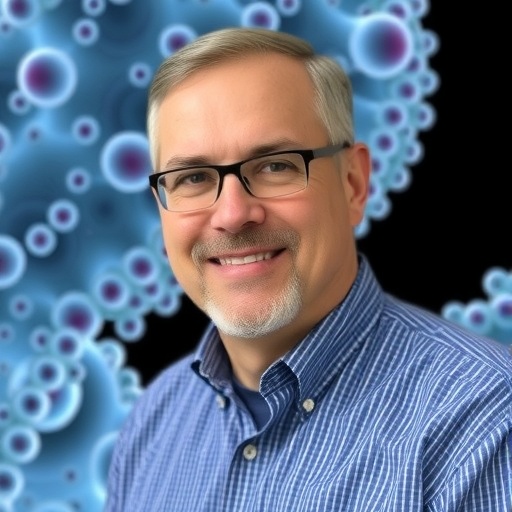In a groundbreaking advancement poised to redefine cellular disease research, Dr. Marmar Moussa, an assistant professor at the University of Oklahoma’s School of Computer Science and Stephenson School of Biomedical Engineering, has been honored with a prestigious U.S. National Science Foundation CAREER award. This recognition supports his innovative five-year project dedicated to developing sophisticated computational tools that intricately link molecular profiles and spatial tissue architecture. Dr. Moussa’s work aims at unveiling the complexities of disease progression, especially in cancers and tissue remodeling scenarios, by integrating data from cutting-edge spatial transcriptomics methodologies.
Current paradigms in cellular disease investigation largely involve the discrete analysis of cellular components. Traditionally, molecular profiling techniques such as genomic sequencing provide cellular DNA and RNA signatures, while histological imaging offers spatial context—but rarely are these methods combined within native tissue environments. This limitation restricts researchers’ capacity to understand how the spatial organization of cells and their microenvironment impact pathological transformations. Dr. Moussa’s approach addresses this lacuna by creating algorithms that marry molecular data with precise spatial location, thus setting a new standard for microscopic and molecular correlation.
His project’s driving principle focuses on the fact that diseases such as cancer do not affect cells in isolation. Instead, malignant transformations are deeply influenced by alterations in the microenvironment surrounding cells. These environmental modifications are often visible at the tissue architectural level yet remain disconnected from molecular alterations within individual cells. By marrying spatial transcriptomics—which profiles gene expression within the spatial context of tissues—and computational modeling, Dr. Moussa’s research seeks to elucidate the pathways through which cellular communication and molecular changes propel disease states.
The computational algorithms under development aim to identify gene activation patterns within specific tissue locales, thereby enabling early detection of disease progression signals. This spatial resolution is critical because the microenvironment often dictates disease trajectory, influencing how cells function and interact. Unlike bulk sequencing approaches which average signals across many cells, spatial transcriptomics preserves positional information to highlight heterogeneity within cellular neighborhoods, essential for understanding complex disorders like cancer where cellular diversity drives therapeutic resistance.
Further expanding the capabilities of these tools, Dr. Moussa’s research will explore intercellular signaling networks within tissues. By deciphering the molecular dialogue between adjacent and distant cells, the project will uncover the mechanisms by which molecular perturbations disseminate through tissue landscapes during disease advancement. This understanding is imperative for mapping how localized pathological events might elicit systemic consequences, fueling tissue remodeling and malignant transformations.
One of the seminal deliverables of this initiative is the creation of an interactive, web-based platform designed for the global scientific community. This accessible tool will facilitate the analysis of spatially resolved transcriptomic datasets using the newly developed computational algorithms. Beyond functioning as a mere repository, the website will integrate data generated from the project alongside existing public databases, enabling researchers to perform comprehensive cross-study analyses tailored to their specific inquiries.
This digital platform’s design will promote methodological transparency, reproducibility, and data sharing, fostering collaborations across diverse research fields. By democratizing access to advanced computational methods and spatial datasets, Dr. Moussa’s project enhances the capacity of scientists worldwide to interrogate molecular and spatial complexities, potentially catalyzing breakthroughs across oncology, immunology, developmental biology, and beyond.
While the chief application of these tools targets oncology—particularly improving the understanding of tumor microenvironment interactions and cancer progression—the versatility of the methodologies extends to non-cancerous disease processes and even to plant sciences. The intricate interplay between cells and their extracellular matrix during tissue remodeling, inflammation, and regeneration stands to be illuminated with unprecedented clarity, offering broad biological insights and aiding in the development of novel therapeutics.
The potential to marry genomics and spatial biology heralds a paradigm shift in how diseases are modeled, diagnosed, and eventually treated. By capturing the molecular fingerprints of cells in their native context, the research advances the precision medicine agenda, ensuring that therapeutic interventions consider not only genetic aberrations but also the spatial dynamics underpinning pathological states.
Dr. Moussa’s project also stands to contribute significantly to computational biology by enhancing algorithmic frameworks capable of managing and interpreting the complex, high-dimensional data intrinsic to spatial transcriptomics assays. These advances will push the boundaries of machine learning applications in biology, facilitating more nuanced pattern recognition and predictive modeling based on spatially contextualized molecular signatures.
In integrating cross-disciplinary expertise spanning computer science, biomedical engineering, genomics, and pathology, this endeavor exemplifies the growing imperative for holistic approaches in biomedical innovation. It embodies the fusion of computational prowess and biological insight necessary to tackle the multifaceted nature of human diseases in ways previously unattainable.
Ultimately, the insights gleaned from this pioneering work could translate into earlier cancer detection, a better understanding of metastatic processes, and improved strategies for modulating the tumor microenvironment. By enabling scientists to visualize how molecular alterations propagate through cellular communities within tissues, this research enhances our ability to predict disease trajectories and tailor personalized interventions.
With the support of the National Science Foundation, Dr. Moussa’s ambitious research project promises not only to advance academic understanding but also to equip the broader scientific ecosystem with the tools requisite for expanding our comprehension of life at the molecular level—one cell, one tissue, and one disease at a time.
Subject of Research: Computational algorithms integrating spatial transcriptomics with molecular profiling for advanced disease study.
Article Title: Advanced Computational Tools to Decode Cellular Microenvironments in Disease
News Publication Date: Not provided
Web References: Not provided
References: Not provided
Image Credits: Not provided
Keywords: Genomics, Life sciences, Computer simulation, Genome sequencing strategies




